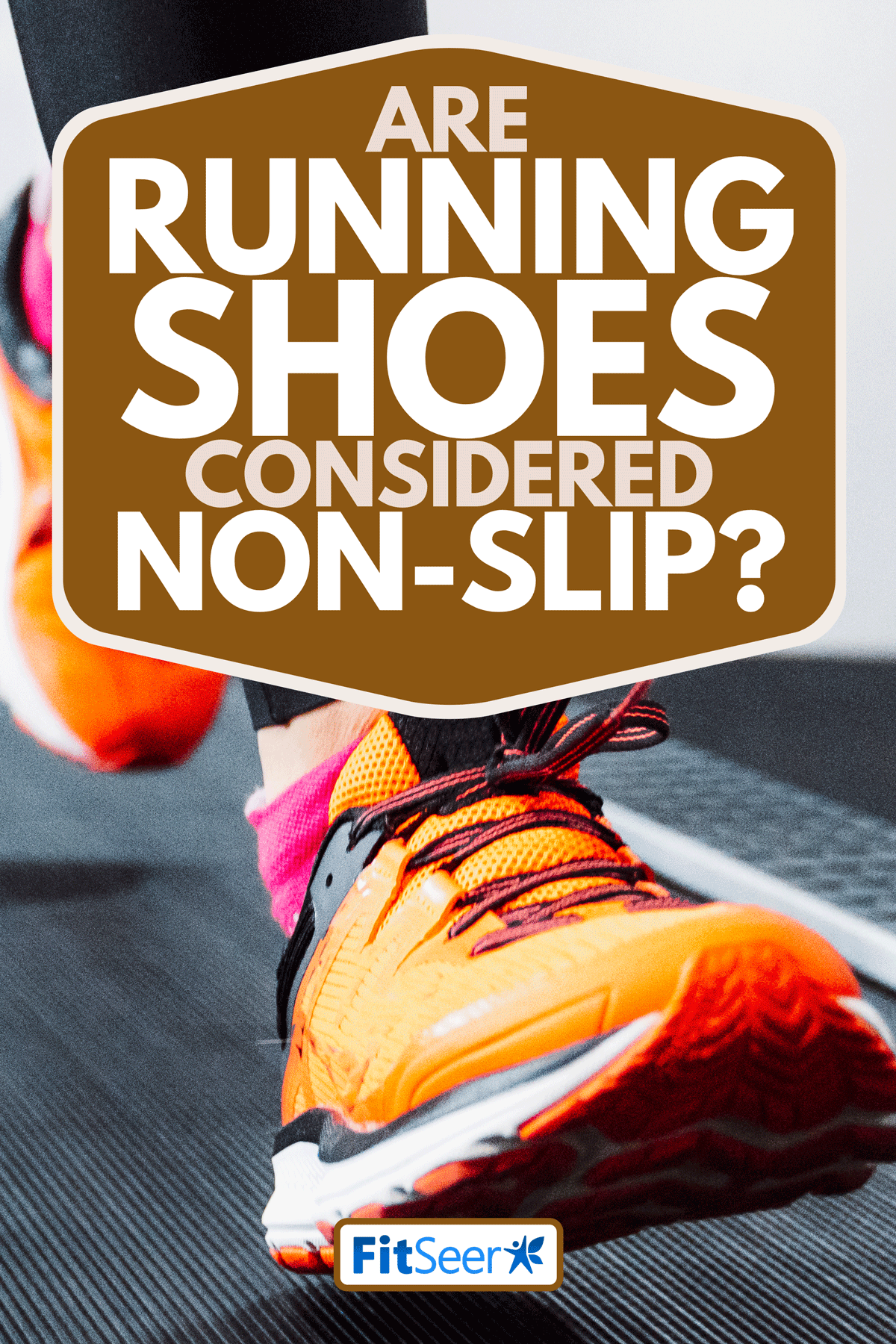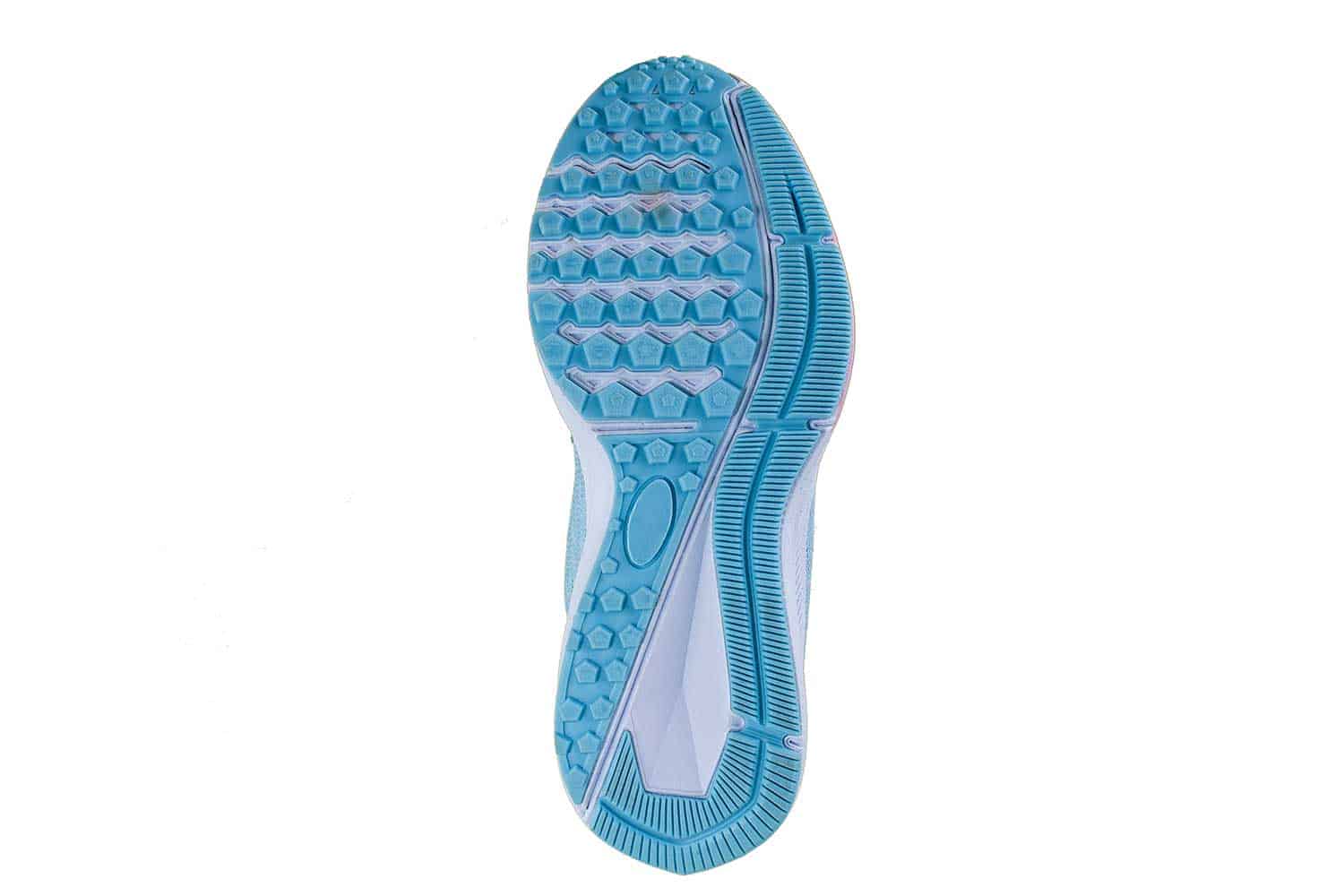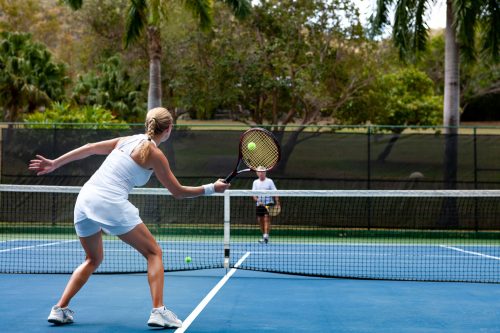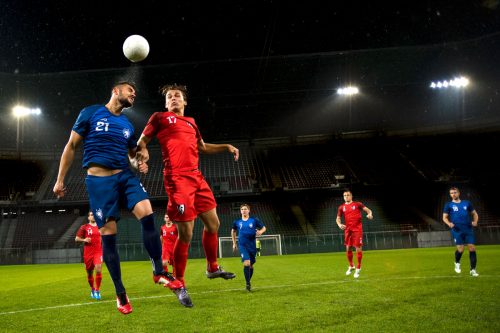Real runners have the itch to run in all weather; nothing can stop them! However, safety is essential while running, including solid footing on each step. So if you want to run in the rain or on a wet surface, will you be safe? We've researched this topic and have come up with the answer.
Non-slip shoes are designed to help the wearer maintain sure footing on wet or slippery surfaces. This designation is given to shoes based on their soles and how well they repel water and keep traction on the ground. Many running shoes have these specific soles and thus can be classified as non-slip.
We know that you care about your running shoes and want to make sure you'll be safe. That's why we've put together this guide to help you understand what makes a shoe slip-resistant. Please keep reading for more details, plus recommendations on some popular running shoe brands.
Ready, set, go!

How can you tell if shoes are non-slip?
The easiest way to figure out if shoes are non-slip is simple: do the manufacturers advertise them as non-slip? Since slip resistance is an essential characteristic in many shoes, brands are eager to show it off. Some might even state that they meet the requirements from ASTM (the American Society for Testing and Materials) certification F1677, a widely recognized standard for slip-resistance.
If they do boast about slip-resistance, this isn't a guarantee that they'll be as sticky as you need, but it's a place to start! Beyond the manufacturer's labeling, three factors determine whether or not you'll slip and slide around in the shoes.
Outsole material
three layers form the sole of a shoe. The top layer, the one that comes into contact with the foot, is called the insole. The midsole is the part that provides the cushion and is directly underneath the insole. The bottom layer is called the outsole. In terms of slip resistance, the outsole is the most critical layer.
A slip-resistant outsole will be made out of a tacky material. This is often some synthetic leather such as EVA (ethylene vinyl acetate) or petroleum leather. Another similar material is TU (thermoplastic polyurethane). Of course, actual rubber outsoles are also slip-resistant but cost more than these synthetic materials.
There's a reason vehicle tires are made out of rubber, and it's because they can grip the road in all sorts of situations. The outsole material should also be reasonably soft so that it can grip the surface. This lets the shoe form to the ground on each step.
Outsole design
Once you've decided the outsole is made from an acceptable material, make sure it's designed in a slip-resistant way. The best running shoes have an outsole with a large surface area. A lot of the outsole touches the ground when each step is taken. If the outsole material is slip-resistant, that's the part that we want touching the ground more than others.
One of the most essential traits of slip-resistant shoes is their ability to disperse water and liquid effectively. When you step in the water, you want it to be forced outside the shoe and then out from underneath it. Otherwise, you experience the hydroplane effect of the shoe remaining on top of the water. To achieve this, the edge of the outsole should be slightly rounded. A flat outsole doesn't leave any room for water to escape.
Tread pattern
For the same reason, slip-resistant shoes have an open tread pattern instead of an enclosed tread pattern. An open tread pattern has a tread that runs to the edge of the shoe. When you step in water, the grooves allow it to run all the way out from under the shoe. On the other hand, an enclosed tread pattern has a piece of outsole that surrounds the tread. The water has nowhere to go and is trapped.
Also, pay attention to the pattern of the tread. The smaller the pattern, the more slip-resistant a particular shoe is. Little spirals, hexagons, or circles are standard designs for slip resistance. These patterns are meant to create friction between the sole and the floor's surface, even if it's wet. Ideally, the tread should have at least two millimeters of space between each tread.
A multi-patterned tread is a valuable characteristic of non-slip shoes. Tread variety allows the shoe to wear down equally because the most often used parts can be molded differently. Notice the tread on the shoe below. It has small pentagonal treads, allows water to escape, and has multiple types of tread.

Is there a difference between non-slip and slip-resistant?
You might see the terms non-slip and slip-resistant (or less frequently, non-skid or skid-resistance) used on certain shoes. These terms can be used interchangeably because they mean the same thing. Companies can choose between any of these options to market their shoes.
If you're running in wet weather, you can expect your shoes to get dirty. But don't worry, you can clean them! Check out this guide for details: How To Clean Mesh Running Shoes? [5 Steps]
Popular Running Shoe Brands
Running shoe brands have different things they're known for, including some that are slip-resistant. Here are four popular brands for running shoes that you might be curious about.
Are Brooks slip-resistant?
Brooks is a brand that makes perhaps the highest-quality running shoes on the market. Many of their shoes meet the requirements listed above for slip-resistance. The two pairs shown below have the appropriate shape and tread to repel water and grip the pavement. They also have rubber soles for maximum traction.
Click here to view these shoes on Amazon.
Click here to view these shoes on Amazon.
Thinking about buying a pair of Brooks but want to make sure they'll fit correctly? Read this article: Do Brooks Running Shoes Stretch?
Are Asics slip-resistant?
Asics are another high-quality brand of running shoes. They have several pairs of shoes that are slip-resistant and have excellent outsole and tread. This pair has a small, round tread and a rubber outsole.
Click here to view these shoes on Amazon.
This pair has an arrow-like tread and plenty of color options to choose from.
Click here to view these shoes on Amazon.
Are Nike running shoes non-slip?
Nike is one of the top sportswear companies in the world. They make shoes for all sports, and running is no different. Here are a couple of pairs that would qualify as non-slip. Be careful: because Nike makes athletic shoes of all types, not all of their shoes are designed for running. Make sure to buy a pair that fits your specific running style.
These two pairs, however, are made for running and will give you maximum traction.
Click here to view these shoes on Amazon.
Click here to view these shoes on Amazon.
Does Mizuno have non-slip running shoes?
Mizuno has a niche following that loves their running shoes. They provide excellent stability for those with stress injuries or special foot needs. Here are a couple of pairs that will keep you on your feet, even on wet pavement.
Click here to view these shoes on Amazon.
Click here to view these shoes on Amazon.
In Closing
Running shoes often have the type of outsole that makes them non-slip. To determine whether a shoe is slip-resistant, look at the outsole material, outsole design, and tread pattern. Brands such as Brooks, Asics, Nike, and Mizuno all have non-slip running shoes available for purchase.
Good luck in all your running adventures, and stay safe!










![Read more about the article Do Football Gloves Stretch With Use? [And How To Stretch Them Faster]](https://fitseer.com/wp-content/uploads/2022/04/Football-players-trying-to-catch-the-ball-500x333.jpg)



